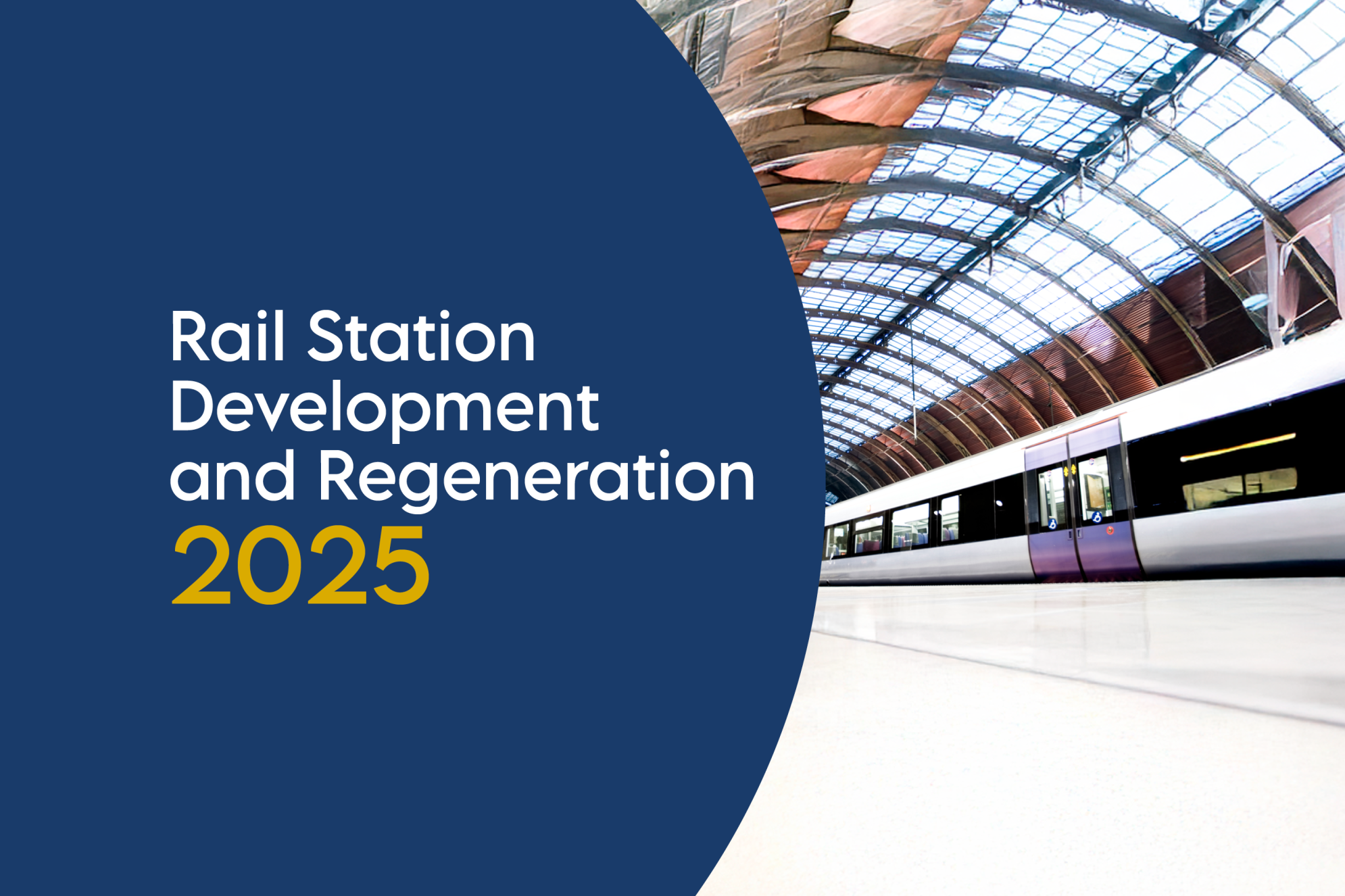
Rail Station Development and Regeneration Conference: Key Take-aways
Waterfront Conference Company held its annual Rail Station Development and Regeneration Conference in July 2025. Here, conference producer, Martina Serafini, takes a look at some of the key points.
As radical reforms are set to completely transform the UK rail industry, designing stations that meet passengers and communities’ needs remains a key priority. While the establishment of Great British Railway is expected to simplify how station upgrades will be delivered, current schemes still face major challenges.
Rail Station Development and Regeneration 2025, organised by Waterfront Conference Company on 1 July, brought together rail professionals and property developers to explore how station projects of all scales are progressing. The main takeaways were that selecting the right delivery model and building effective partnerships are essential to drive development forward.
Ben Martin, Change Lead – Industry Finance at Network Rail, highlighted the new opportunities unlocked by rail reforms for station investment. Public ownership combined with increased devolution will enable closer collaboration between operators and local authorities, ensuring that station regeneration aligns more closely with wider regional development.
However, reforms alone are not enough. Without increased investment, many projects struggle to advance. Representatives from Tees Valley Combined Authority and Grant Thornton shared their perspective on securing funds and maximising their impact. Developers must understand how to effectively demonstrate the economic and social benefits of station improvements to reduce risks for investors.
To guide this, the Railway Industry Association presented their latest discussion paper on ‘Stations: Engines of Communities’, which identifies three characteristics for stations to attract investment: the capacity to generate revenue quickly, the ability to fund future improvements and the potential to drive quick house development.
An example of a project using external funding sources was the transformation of Banbury Station, as explained by Zach Bailey, Regional Growth Manager at Chiltern Railways. Upgrades included the creation of a local area gallery, delivered by Banbury Business Improvement District, and a new Costa Coffee shop, entirely funded by Caterleisure.
Future proposals, such as the reopening of the Cowley branch line, show the importance of leveraging private investment to optimise the use of station property and enhance areas for communities. Oxford City Council shared their plans for two new stations, which would serve as a gateway to the life sciences hub and Oxford Business Park. The scheme would support the creation of 10,000 new jobs and the delivery of 6,000 homes.
Attendees also explored the most effective delivery models for carrying out these transformational masterplans. Speakers from Addleshaw Goddard, Network Rail, ORR and West Midlands Rail Executive discussed how to develop a railways consenting strategy while understanding the key stakeholders to engage to make the scheme viable. Project partners must take a ‘one team’ approach to accelerate delivery and ensure flexibility when schemes evolve.
The same applies to smaller station upgrades, where strong collaboration with communities is essential. Matt Stacey, Head of Property at East Midlands Railways, explained how this approach helped overcome the unique challenges faced by local stations. He noted that customer satisfaction with station experience increased by 20% as a result of their efforts.
The implementation of new technologies and innovation also plays an important role in enhancing passenger journeys. Avanti West Coast illustrated how they have been implementing smart ticketing solutions while using AI data collection to improve station arrivals and regeneration opportunities within surrounding sites.
In conclusion, the future of station development isn’t just about reforming the sector – it’s about strengthening collaboration between delivery partners to maximise investment and reimagining stations as destinations shaped by the communities around them.
Rail Station Development and Regeneration will return next year to explore how station schemes are being delivered across the UK, considering the impact of rail reforms and new approaches to accelerate development. Make sure you secure your place to gain the insight you need to advance your project.
You can find out more about Waterfront Conference Company’s rail conferences here: https://waterfrontconferencecompany.com/sectors/rail
